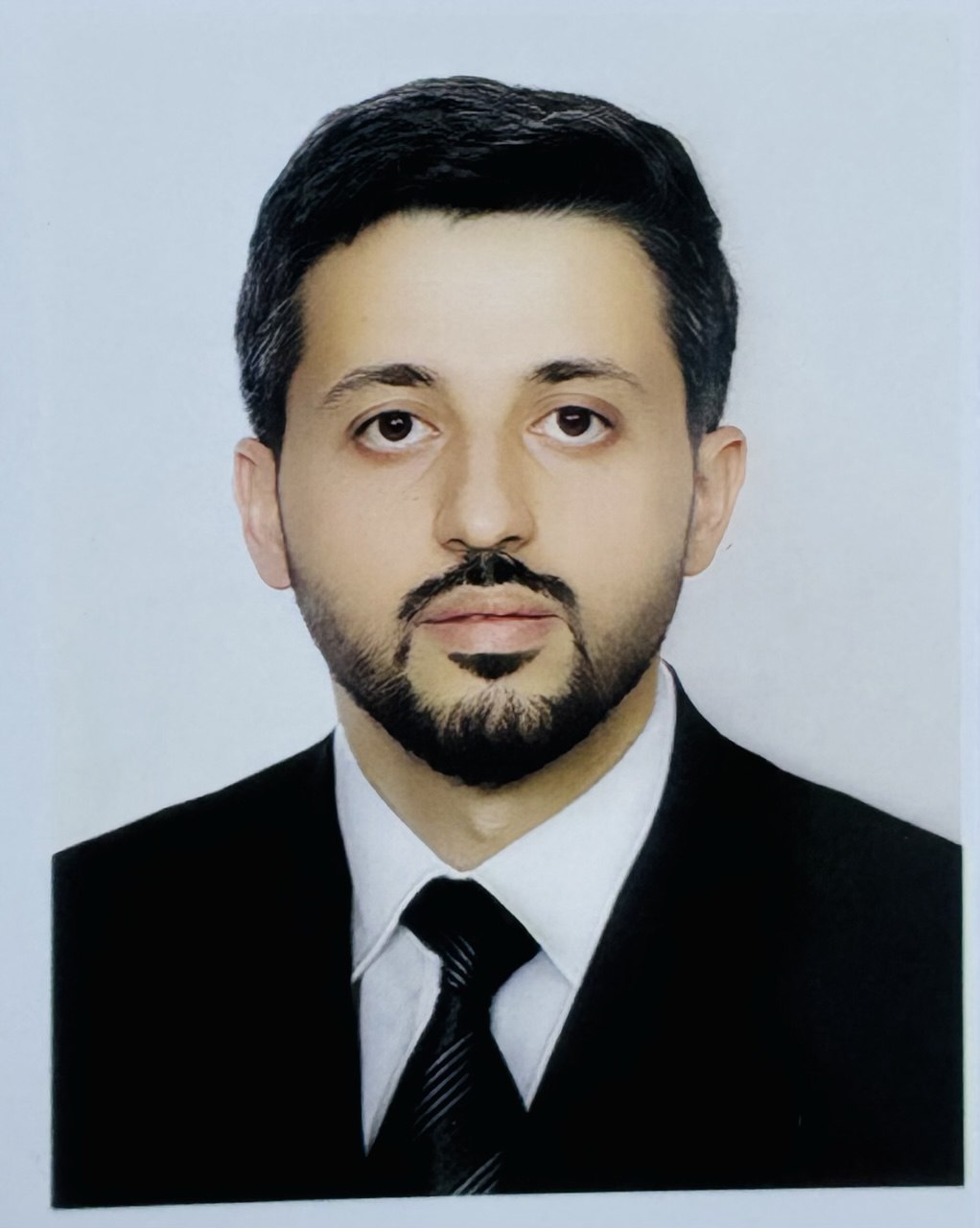
Ismael Thameen Tlayea Yahya
Research Interests
| Gender | MALE |
|---|---|
| Place of Work | Polytechnic College Mosul |
| Department | Medical Equipment Techniques |
| Position | Teaching |
| Qualification | Master |
| Speciality | physics |
| ismael.thameen@ntu.edu.iq | |
| Phone | 07708212680 |
| Address | حي الصديق, نينوى, Mosul, Iraq |
Publications
Study the Effect of Etching Time on the Morphology of Porous Silicon Surfaces Manufactured via Photochemical Etching
Sep 15, 2024Journal Iraqi Journal of Applied Physics
publisher iraqi society for alternative and renewable energy sources and techniques
Issue 1813-2065
Volume 20
Given the importance of silicon nanocrystals in many applications of microelectronics, energy storage, and biomedicine, porous silicon was prepared from a n-type silicon wafer with a crystal orientation (100), negative conductivity, and low resistance (4.3 x 10^-4 ohm*cm) by photochemical etching technique in the presence of a halogen lamp (1000 W) and concentrated hydrofluoric acid (HF 40%). The effect of changing the etching time (70 minutes, 80 minutes, and 90 minutes) on the morphology of their surfaces was studied, and the results of atomic force microscopy (AFM) showed the formation of porous layers (392.8 nm, 491.3 nm, and 566.3 nm) and average diameters of the grains and nanoparticles (101.4 nm, 106.9 nm, and 44.85 nm) respectively. The results indicated that the surface roughness and thickness of the porous layer of the samples prepared increases when the etching time increases and decreases when the etching time decreases.
Calculation of The Electronic Energy Band Structure of GaAs Crystal Using The Semiempirical Tight Binding Method
Sep 1, 2021Journal Journal of Education and Science
DOI 10.33899/edusj.2021.129475.1140
Issue 1812-125X
Volume 30
Abstract In this paper, the semi-empirical tight binding method for the nearest neighbors in the first Brillouin zone has been used to calculate the energy band structure of GaAs crystal which have zinc blend ZB structure, the band structure has been calculated by using sp^3 model which have 9 parameters and sp^3 s^* which have 13 parameters, both these models are used to calculate the main characteristic of both valence and conduction bands. The matrix elements were determined using the method followed by Cohen and Vogl, by identifying points in the wave vector space within the reduced Brillouin zone between the points of high symmetry and calculating the eigenvalues of all these points by building a computer program in MATLAB to form the energy band structure. The effective mass m^* along the direction [111] for the lowest conduction bands has been calculated. A comparison between the sp^3 model used by Cohen and the sp^3 s^* model used by Vogl has been made. The energies of the band structure at points the high symmetry Γ and X obtained from the study were compared with the results of the published research. The results showed that there is a difference in the energy gap between sp^3 and sp^3 s^* models and there is good agreement between the band energies at high symmetry points between these two models and the published results.
Calculations of Energy Band Structure of GaAs, GaSb and GaP Crystals as a Function of Temperature Using the Semiempirical Tight Binding Method
Sep 1, 2021Journal Journal of Education and Science
DOI 10.33899/edusj.2021.130682.1170
Issue 1812-125X
Volume 30
Abstract In this paper, the band structure of gallium group of III-V semiconductor has been calculated with temperature, the semi-empirical tight binding method was used to calculate the band structure and the matrix elements were calculated for both models sp^3 and sp^3 s^*. A computer program in MATLAB was designed to calculate the energy eigenvalues for the wave vector points in the first Brillouin zone between high symmetry points to form energy bands. The effect of temperature on the energy band of these group of crystals has been studied by changing the values of the lattice constant under the influence of temperature according to the Pierron relation and thus calculating the change in the length of the bond with temperature, which in turn affects the change in the values of the elements of the Hamiltonian matrix. The energy gap and refractive index were calculated at points of high symmetry as a function of temperature. The results showed a decrease in the energy gap values of GaAs, GaSb and GaP crystals with increasing temperature. Then the experimental Varshni relation was used to calculate the change in the energy gap values of these crystals and the results obtained from current study were compared with the results of Panish and Bellani, where the results showed that a model sp^3 s^* gives better results than the model sp^3.As well as the calculations of the refractive index of these crystals using the Moss formula showed that the refractive index will gradually increase with increasing temperatures.






